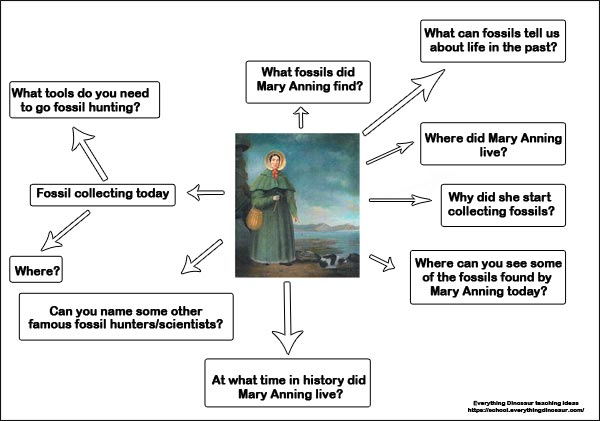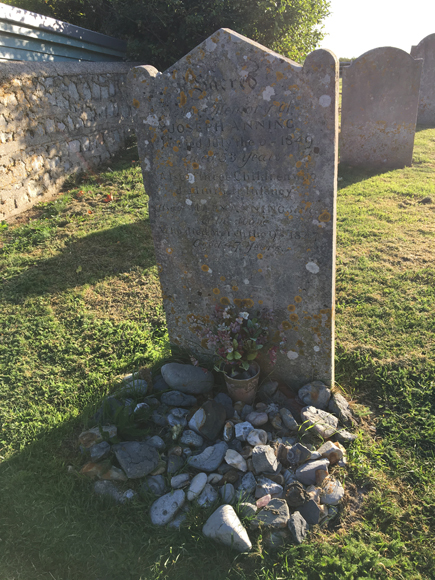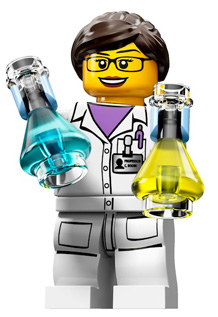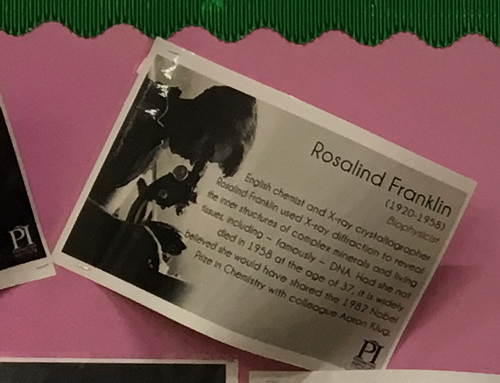Celebrating International Women’s Day
Today, March 8th is International Women’s Day, an annual event that has its origins in the early part of the 20th century. Over the last few years, with women’s rights and inequality issues gaining much greater media attention, this day has provided an opportunity to highlight the many challenging issues and barriers women face, for team members at Everything Dinosaur, it allows us a platform to celebrate and commemorate the huge contribution women have made and continue to make to science.
Spotted in a London Primary School – Inspiring the Next Generation of Scientists
Picture credit: Everything Dinosaur
International Women’s Day
The theme for International Women’s Day 2019 is: “Think equal, build smart, innovate for change”. International Women’s Day has become an important date in the international calendar as it provides an opportunity to focus on the achievement of women and amongst other things to celebrate the role women play in the advancement of human knowledge and their contribution to society. It also provides a focal point to address gender inequality.
When team members visit schools, we provide information to help the teachers to identify suitable role models for the children to learn about. We have been lucky to have worked with some amazing scientists from all over the world and we can provide lots and lots of examples supporting the cause of gender equality in science, after all, the word scientist does not distinguish between male and female.
We Try and Breakdown Stereotypical Views about a Career in the Sciences
Picture credit: Lego
Celebrating the Life and Work of Mary Anning
One of the role models we suggest is Mary Anning (1799-1847). This famous fossil hunter from Dorset and her story has become synonymous with elements of the national curriculum for schools (primary school level). When we visit schools, we provide lots of additional teaching resources and we often challenge the class to research and write about Mary Anning (independent learning and non-chronological reporting).
A Challenge to a Key Stage 1 Class – Ten Questions About Mary Anning

Picture credit: Everything Dinosaur
Tomorrow, March 9th, is the anniversary of the death of Mary Anning, at just 47 years of age. As well as working with Key Stage 1 children exploring the fossils that Mary Anning found and her role in helping to improve our understanding of prehistoric life, when working with older children in Upper Key Stage 2, we introduce other issues that are reflected in the life and work of the famous fossil hunter. For example, in Georgian and early Victorian times, the academic world largely shunned the idea of women making a contribution to scientific enquiry.
During her lifetime, Mary Anning received little credit and very little reward for her efforts. These days, we live in somewhat more enlightened times, although many might argue that there is still a long way to go before true equality is achieved.
Working with Upper KS2 Students
When working with Year 5 and Year 6 students we explore how other scientists treated Mary and her endeavours. She was not permitted to join the Geological Society of London, being a woman, this was forbidden and many of her male contemporaries not only refused to give her credit for her discoveries and insights, they actually took much of the credit for themselves. Sadly, Mary died all too soon having spent much of her life in abject poverty. When Everything Dinosaur team members visit Lyme Regis, where Mary was born, we make a pilgrimage to her grave at St Michael’s church and pay our respects.
Mary Anning’s Grave at Lyme Regis She is Buried Alongside Her Brother Joseph

Picture credit: Everything Dinosaur
The Royal Society Acknowleges Mary Anning
In 2010, the Royal Society published a list of the top ten British women who had most influenced the history of science. Mary Anning was included in this list. Much has changed in terms of gender equality in the sciences, however, despite the Royal Society having its roots in the early 1660s, it is worth remembering that the first female Fellow was not elected until 1945 (we think).
Another female scientist included in the Royal Society list was the chemist, biologist and physicist Rosalind Franklin. Rosalind was an outstanding polymath who made an enormous contribution to our understanding of DNA and RNA and pioneered X-ray crystallography (XRC). Rosalind Franklin is commemorated on the poster we spotted in the primary school.
Rosalind Franklin is Featured on the School Poster Praising the Contribution of Women in Science
Picture credit: Everything Dinosaur
Visit the Everything Dinosaur website: Everything Dinosaur.









Leave A Comment